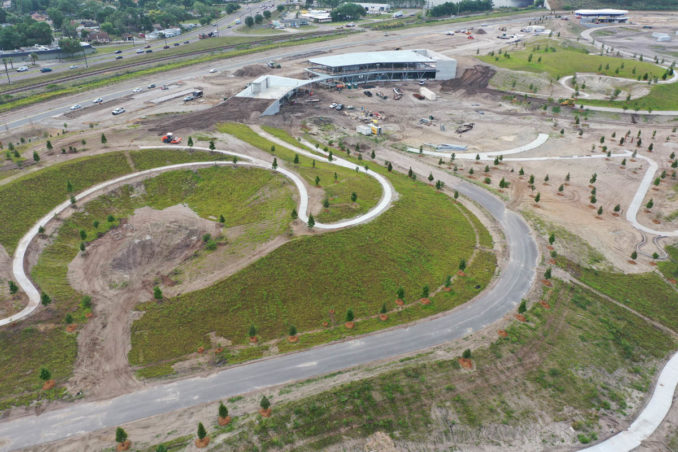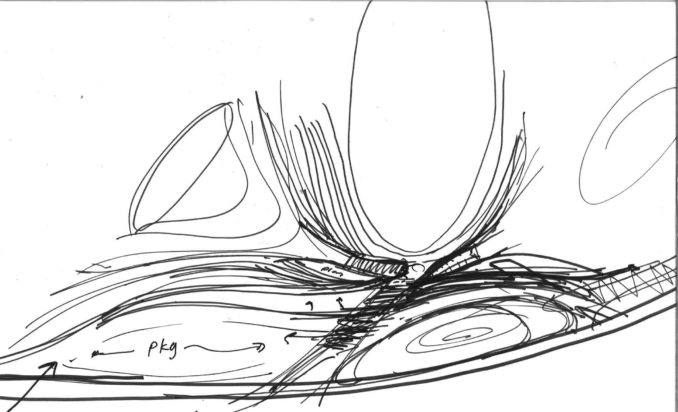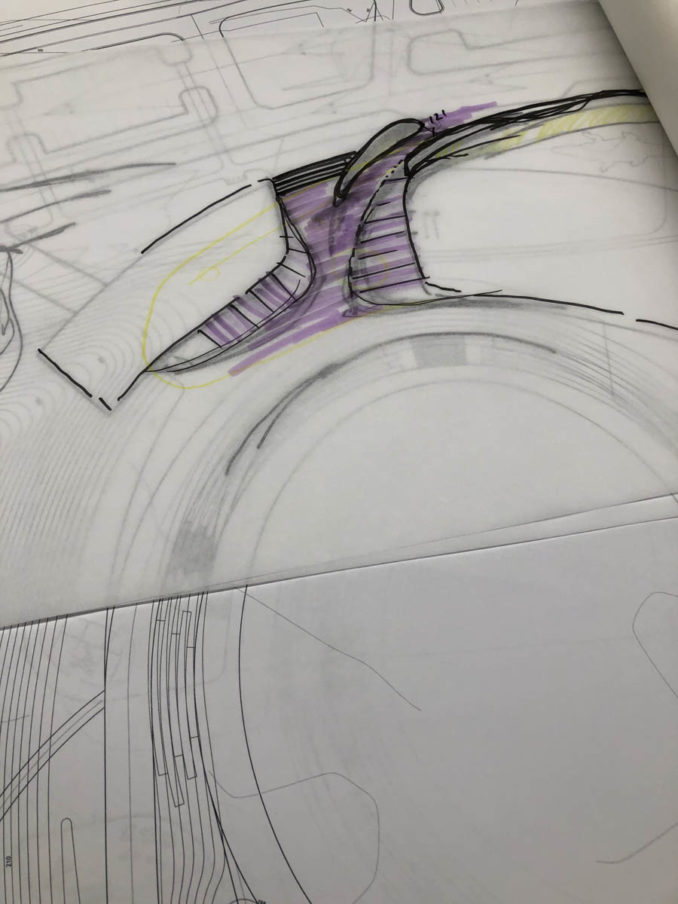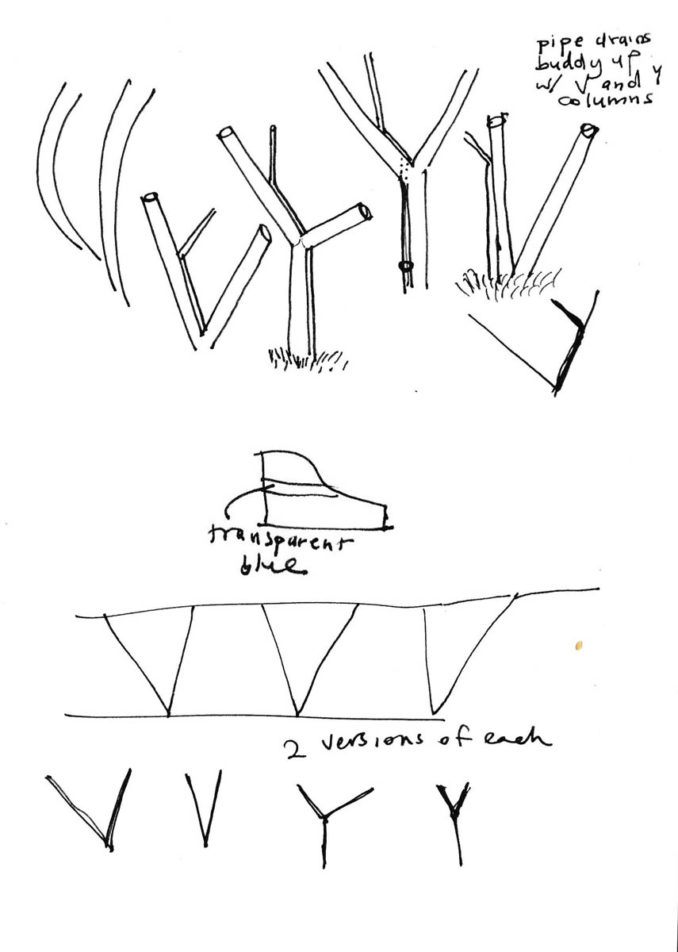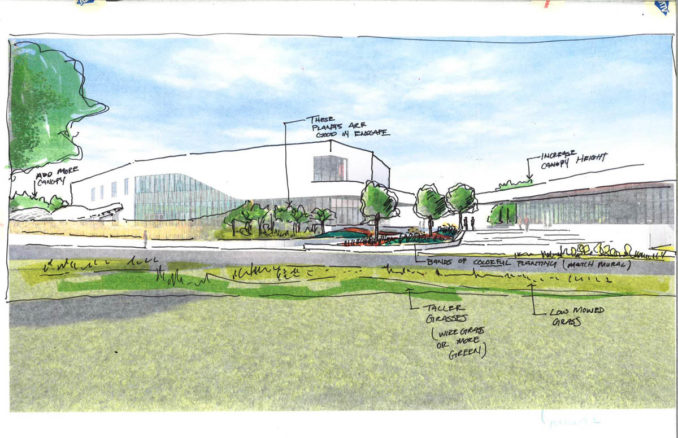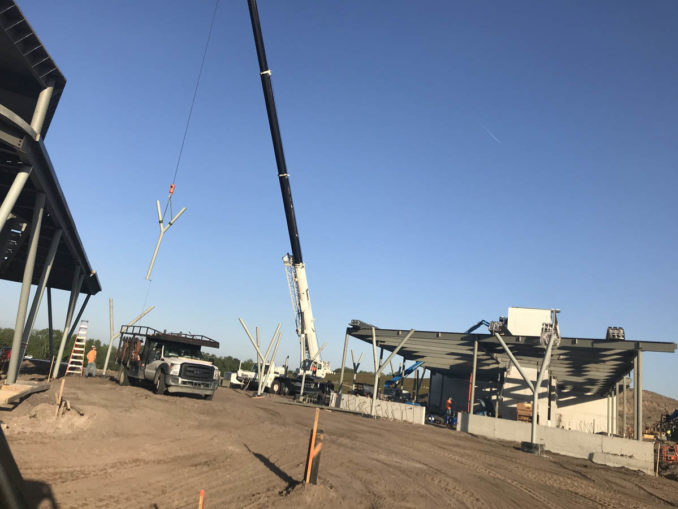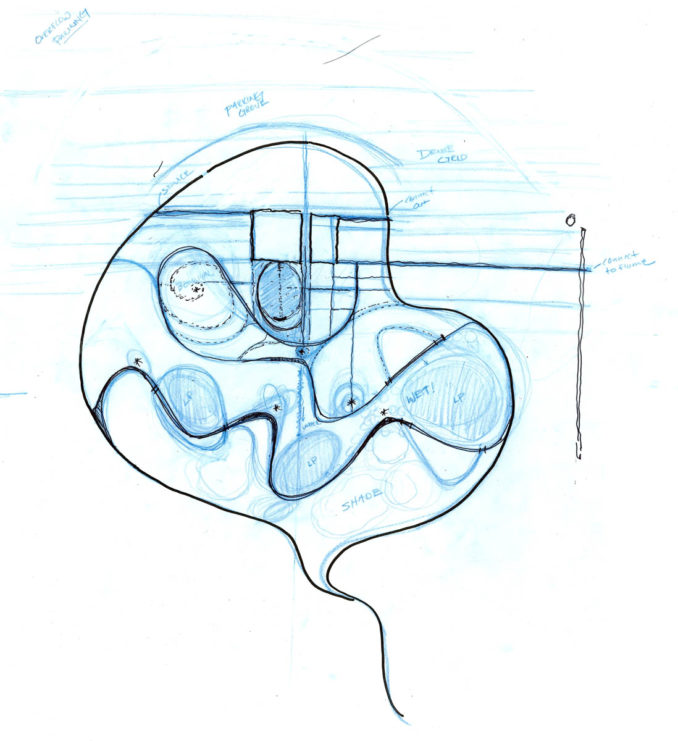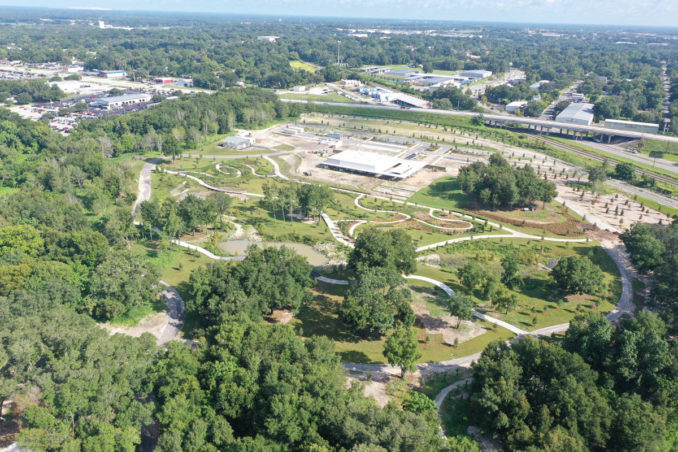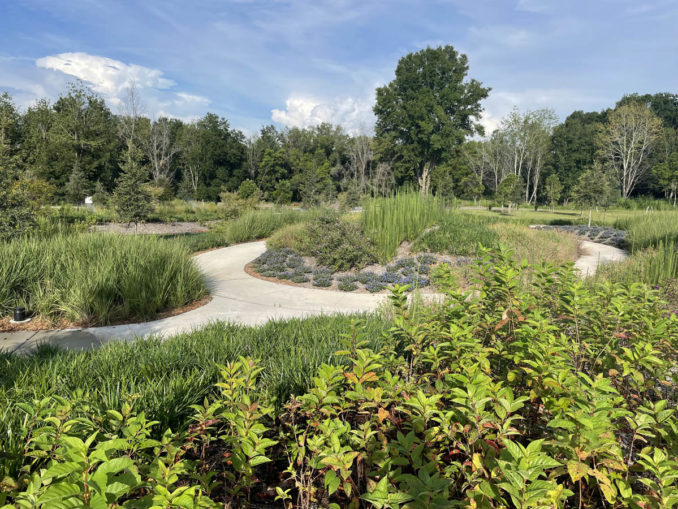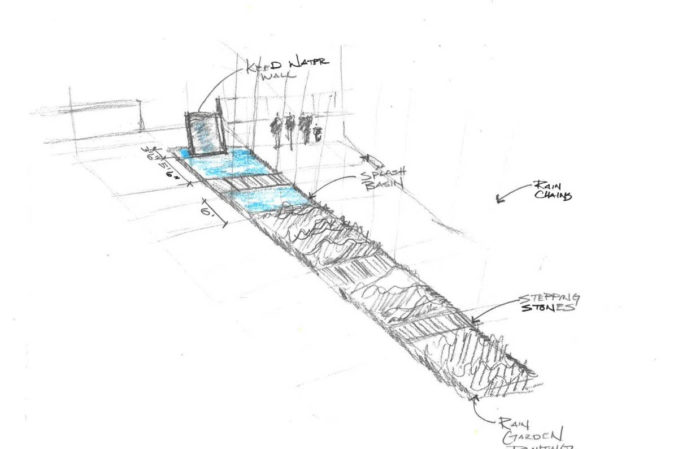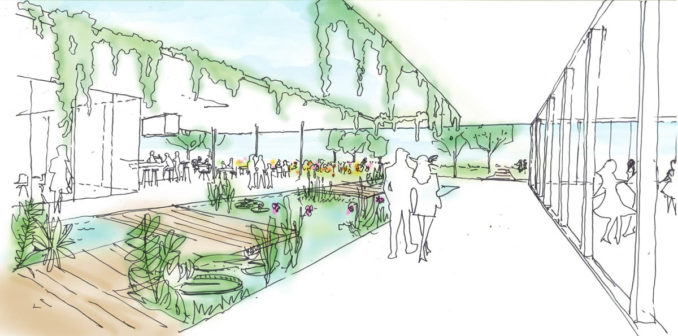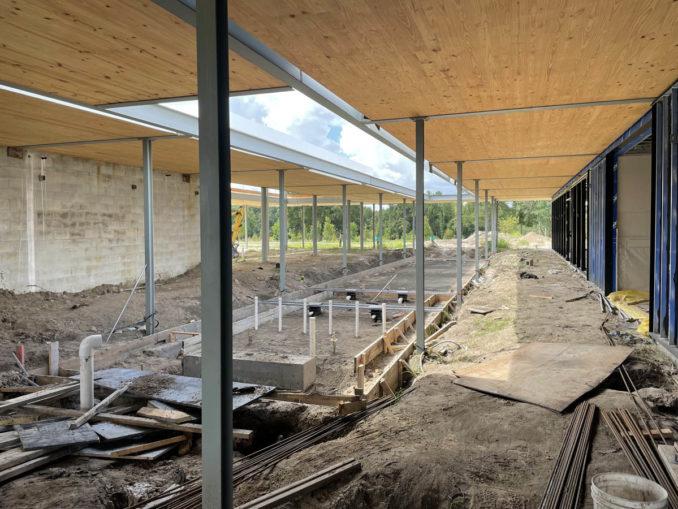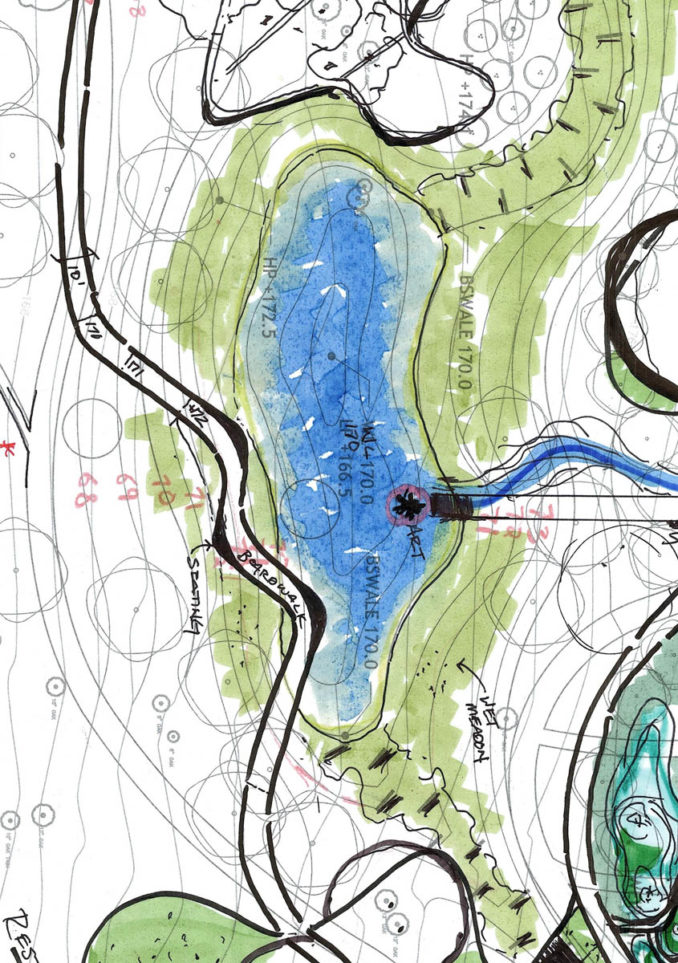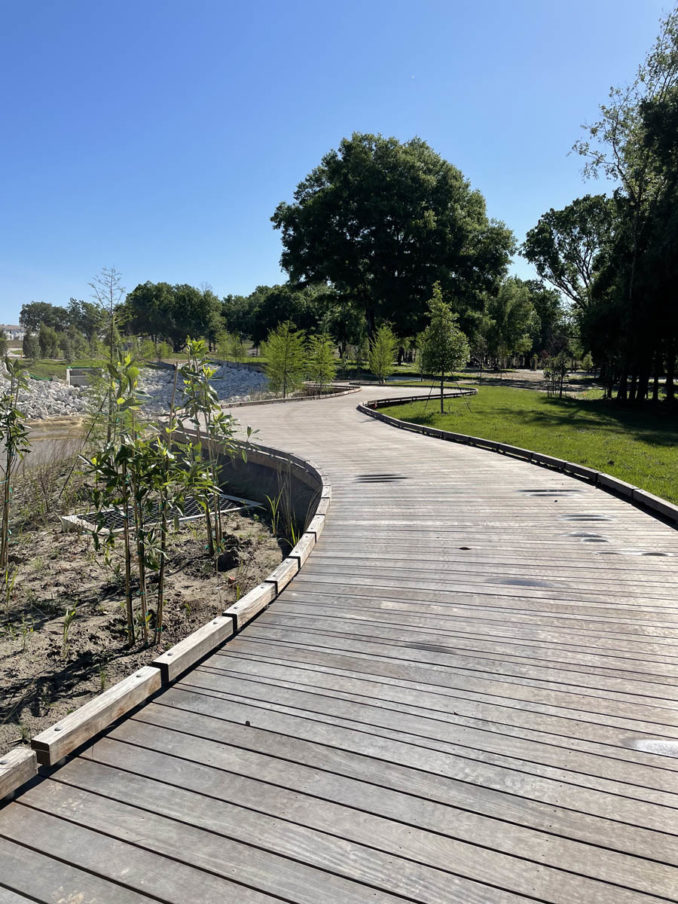By Lucca Townsend, AIA and Anna Cawrse, ASLA, PLA
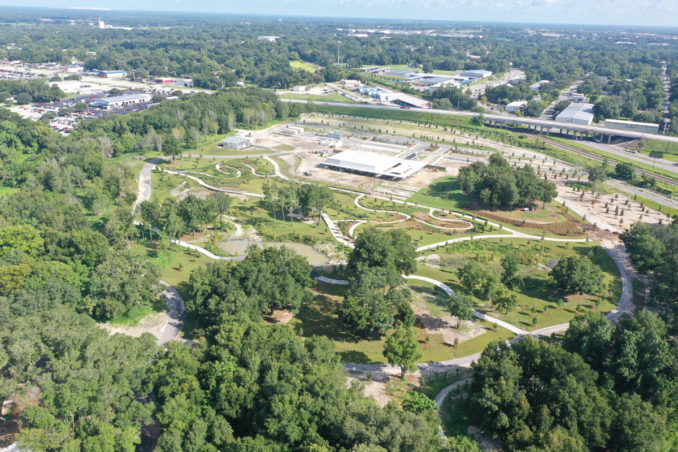
On most projects, we only see the final, finished glossy rendering — that one perfect image that is selected to show the complicated relationship between all the design elements while capturing the perfect lighting effect. What we typically do not see are the behind the scenes messy sketches that inform a big idea: the “from the elbow” bold move that is drawn again and again before landing that perfect curve, or that one challenging custom detail that can only come to life after it has been drawn from every single angle.
At Sasaki, the behind the scenes sketch is alive and well and has been since our founding in the 1950s. We believe the pencil — whether graphite or digital pen — in a designer’s hand is a bridge between the imagining mind and the image that appears on the sheet of paper. We use cross-disciplinary, collaborative group sketching to work out the complex interactions between landscape and building and create seamlessly integrated designs that blur the boundaries between each discipline.
Whether it is a wash of watercolor or a corner scribble, free sketching allows us to spark ideas, inspire each other, and get things wrong. The quick sketch enables our minds to come up with ideas unencumbered, to plant the seed of an idea. Some seeds do not mature while others germinate and become the basis of design.
We love showing off our beautiful renderings, but today we are pulling back the curtain to look at Sasaki’s process, showing how those raw ideas got refined and became a reality at Bonnet Springs Park, a new 180-hectare park now under construction in Lakeland, Florida.
BIG IDEAS
It all began by reimagining the relationship between Lake Bonnet and the upland plateau. The upland plateau — previously a railyard and then a brownfield site — was completely disconnected from the lake. Sasaki’s interdisciplinary team of landscape architects, architects, and civil engineers, designed two hills on the upland plateau to creatively address the issue of contamination from the site’s historic use. The contaminated soil was used as the fill for the hills and then capped with clean soil to become a usable amenity for the site. Not only do the hills safely address arsenic on-site, but they also provide new elevated topography in what is a relatively flat Florida landscape. The hills also provided an opportunity to embed some of the park buildings within them, creating a uniquely intimate relationship between landscape and architecture.
Bonnet Springs Park is all about the curves; the circulator — a 2-mile long pedestrian loop — defines the organic language in the park. This path swirls around the upland plateau and brings visitors down to the wetlands and lagoon. The circulator and hills, together, gave shape to the park’s four main areas: The Heritage Garden, Event Lawn, Botanic Garden, and Lagoon.
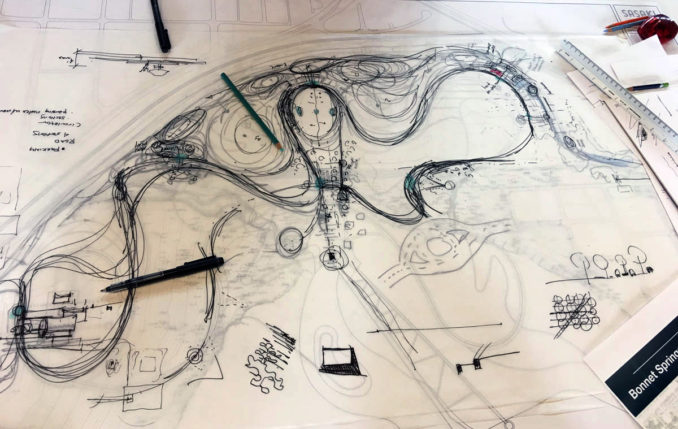
We let our pens loose on large sheets of trace to find the perfect arcs and undulations. Now, those lines are being drawn in the soil. The hills we initially shaped with pencils are filled with arsenic-contaminated soil from the site, and capped off, creating some of the highest elevations around. Subsequently, hours and hours of grading and micro-grading ensured the paths were ADA-compliant and the earth stable and safe.
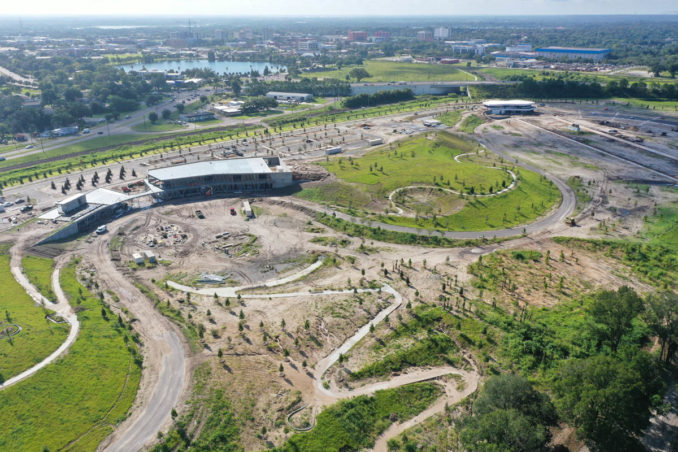
The Heritage Garden and Welcome Center
From the earliest sketches, the Heritage Gardens and Welcome Center have been conceived as one design move. Both the landscape and building employ complex curves to fit into the site and create inviting gathering spaces. The gardens are shaped by the curve of the circulator, while linear mown paths create long site lines from the Welcome Center in the east to the forest and canopy walk to the west. The gardens recall a history of agriculture on the site, with references to the railroad and orange groves that formerly graced this site.
The Welcome Center — housing a store, cafe, and park offices — hugs the edge of the Heritage Garden, separated by the circulator, and is embedded into the north side of one of the human-made hills. The organic curves of the building mirror the surrounding landscape, and the linear paths continue inside the building as columns and stripes on the floor. The ruler-drawn lines create beautiful long views, while the freehand lines create unexpected spaces and mystery.
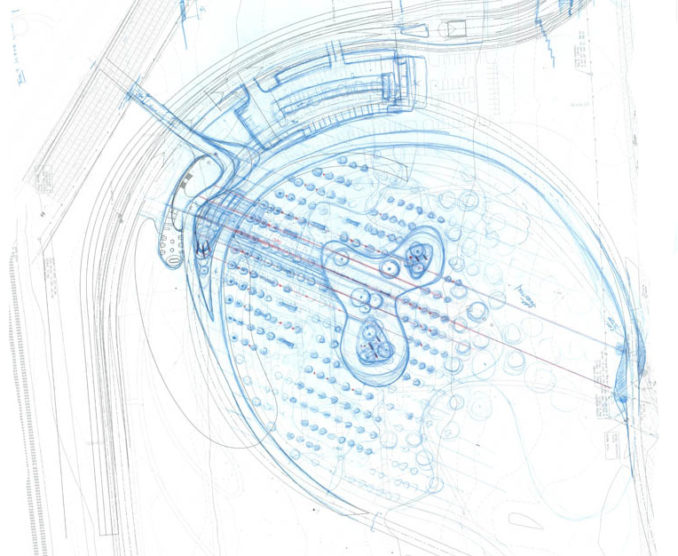
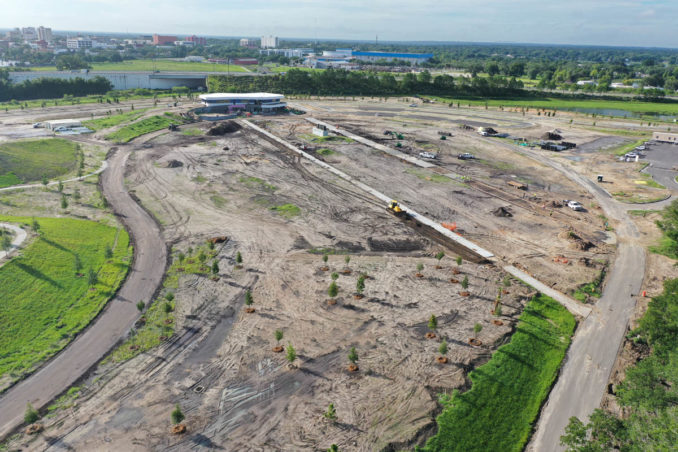
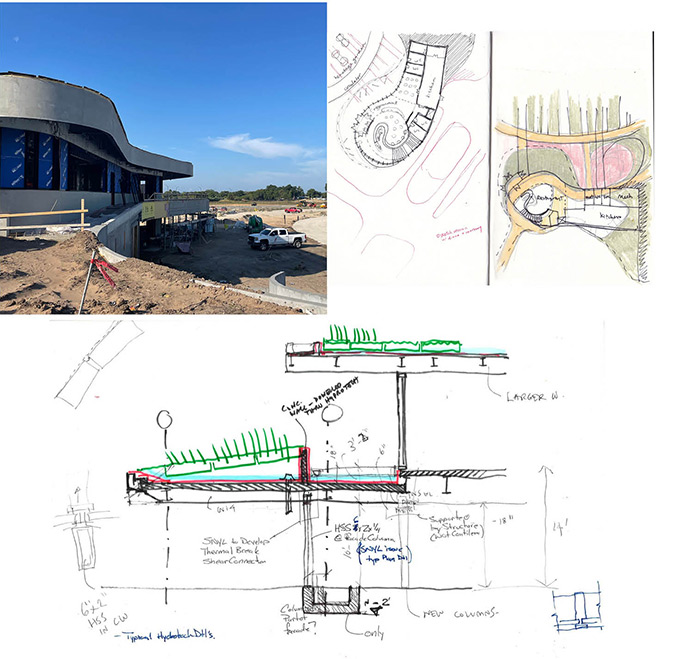
The Event Lawn and Bridge Building
The circulator continues its looping path around the Event Lawn, a 2-acre oval that will host music and performances. Park-goers can experience events from stepped seating embedded into the lawn, from the two flanking hills, or from the Bridge Building. The building’s wings hug the circulator and lawn, creating an intimate plaza that opens up to the performance space. The Children’s Museum wing is embedded in the south hill, and the Cafe emerges from the taller northern hill. Visitors can walk directly from the north hill onto the rooftop bar, and have a view of the event lawn. The building and landscape gestures were developed through iteration upon iteration of swooping sketches on large sheets of trace. As the building and site are constructed, the close collaboration of landscape and architecture is clear, as the building appears to emerge naturally from the hills.
The Botanical Gardens and Event Center
The Botanical Gardens and Event Center are also governed by a relationship between organic curves and straight lines. The garden’s swirling paths bring visitors on a journey through the five senses, meandering by sculpture set in the landscape, and weaving around three ponds that work to clean stormwater runoff before it enters Lake Bonnet.
The Event Center, a rectangular building with a heavy timber roof shading the mostly-glass facade, will host weddings and other gatherings in the gardens. The building’s linear entry provides long site lines into the swirling paths, plantings, and ponds of the Botanic Gardens beyond.
CONCLUSION
Design is a constant balance of art and science, creativity and intuition, collaboration and flexibility. At Sasaki, we use sketching at all points along the design process. The initial sketches let us imagine a site’s potential. We hash out complex constraints in iterative, messy drawings. Collaborative drawing helps us work through ideas, listen, and integrate disciplines. Sketching allows us to be free and open-minded. Perhaps most important of all, it is fun.
Bonnet Springs Park: From Sketch to Construction by Lucca Townsend, AIA and Anna Cawrse, ASLA, PLA from Sasaki

